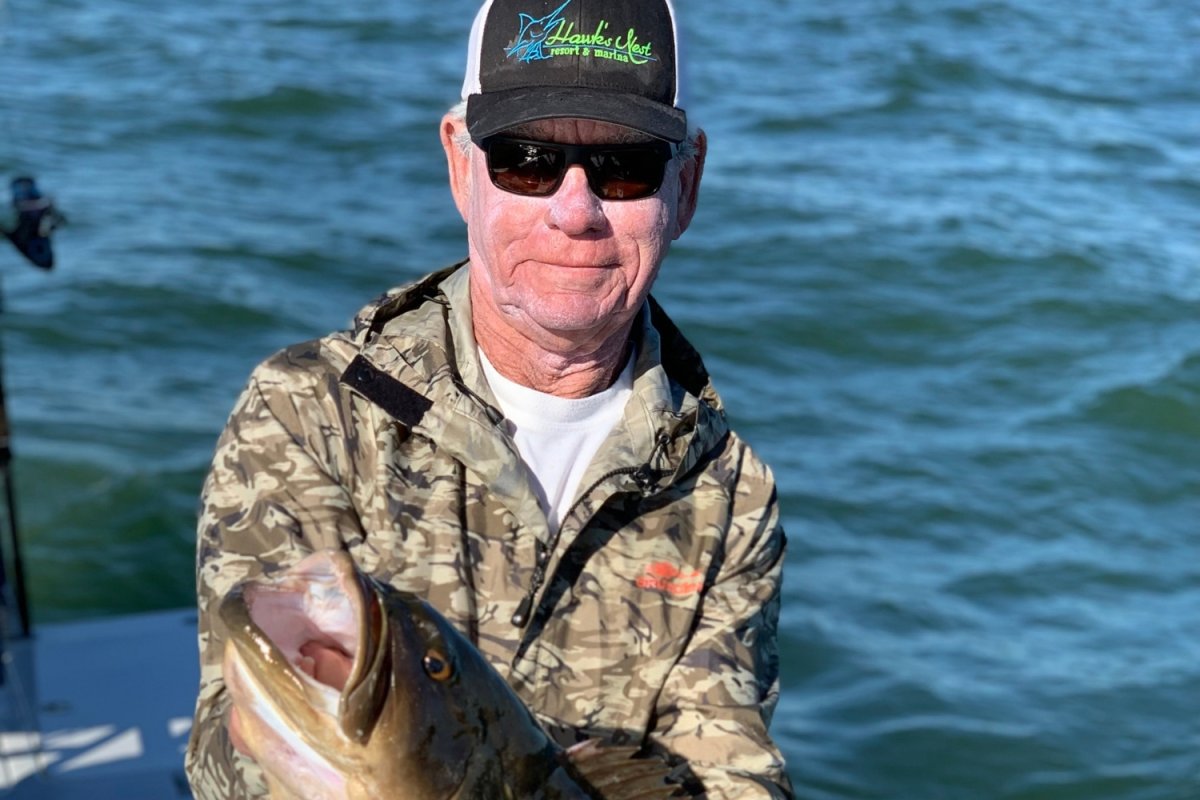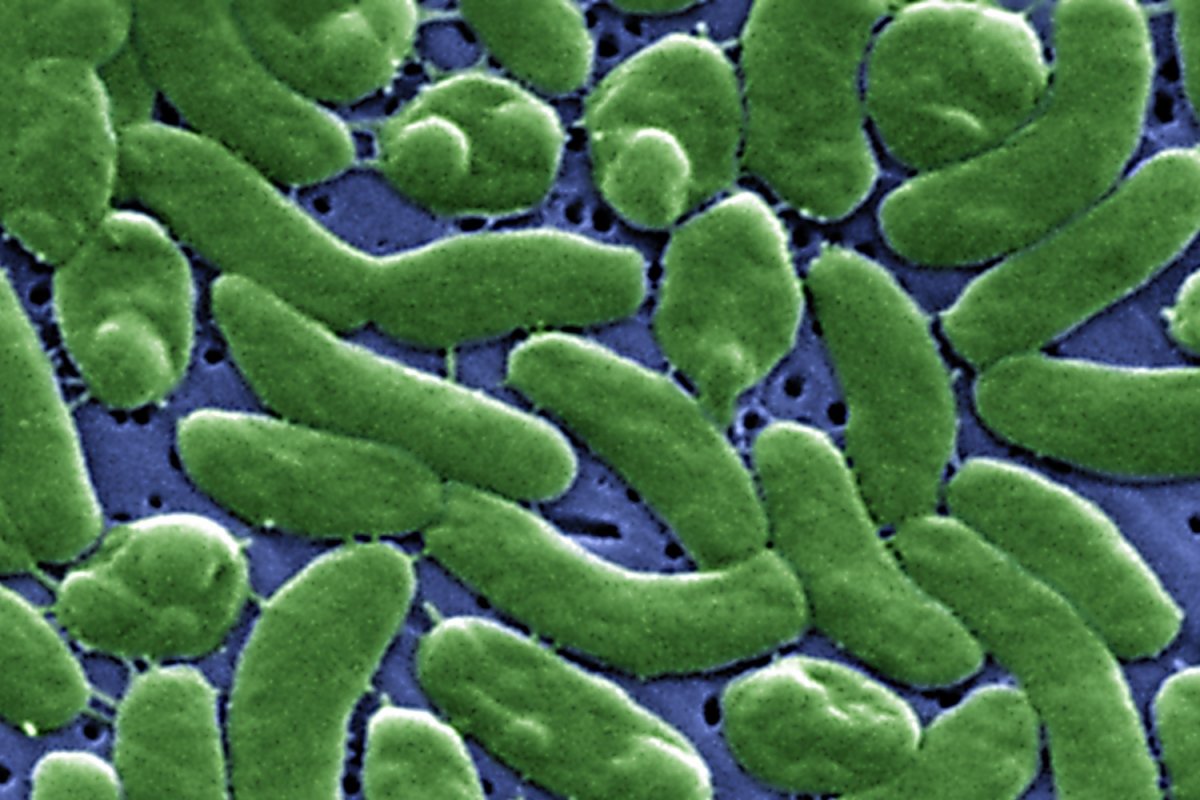I've lived in Florida my whole life and I've lived through many hurricanes. My family and I were fortunate with Hurricane Ian, as we had no flooding and, in comparison with areas like Fort Myers, it didn't affect us, even though we were only a couple hundred miles away.
Yet with this most recent disaster, I was not surprised to see there has been an increase in Vibrio vulnificus, known as the "flesh-eating bacteria" infection, in Florida. A lot of people got injured in the storm, and had no choice but to be in the water, and the infection usually passes through cuts and scrapes in water containing the virus.
I think Vibrio vulnificus is more common nowadays—or, at least, the knowledge is more readily available, and doctors know how to treat it. That wasn't the case when I caught the infection in 1995.
What it's like to have Vibrio vulnificus
Vibrio vulnificus is a nasty bacteria that flourishes in warm water—it doesn't matter if it's dirty or clear. In fact, when I contracted the infection, I was snorkeling for lobsters in pristine water, by the breathtaking coral reefs of the Bahamas. There was a low southern breeze, and the sea felt calm.
I was there with my wife and our two kids for our summer vacation. It was towards the end of our trip and we were getting ready to head back on our 40 feet boat to our home in Florida.
I'd been doing a bit of snorkeling in the past couple of weeks, and wearing flippers that had rubbed and left a blister on my left heel. A couple of hours into snorkeling one sunny day, I had a funny sensation in my foot, around the area of my heel. I knew I had a blister, but this felt more sensitive than just a blister. It hurt—it wasn't stinging, it was more like a burning sensation.
The more I snorkeled, the more sensitive it seemed to get, so I came back on board the boat to check it out. When you're snorkeling in the tropics, there are all sorts of corals and jellyfish that can sting you if you touch them, so I thought my foot might have come into contact with something like that.

On the boat, I took off my shoe. My heel was red and you could see the broken skin. Within minutes, it was swollen. Within half an hour, it had swollen to the size of a lemon. After an hour, it was more the size of an orange—my heel had doubled in size, and it was red and bulbous. It was hot to the touch, and started burning a lot. I've had infections before, but I had never had something get so inflamed so quickly. It was like a big, blood-filled blister that kept growing and growing.
It felt similar to when I'd had impetigo, so I suspected I might have contracted that. But even that didn't seem quite right, as this infection was so aggressive and continuing to swell so quickly. It worked its way up from the heel into my ankle and lower leg.
I was getting worried, not knowing what it was. Within that first hour, when I noticed it advancing so rapidly, I knew we were about four hours away from Florida in our boat. So we put everything away real quick and I told my wife: "We're going home now. And as soon as we get to the dock, I'm going to go to the hospital."
Seeking treatment for Vibrio vulnificus
By the time I got to the hospital, my whole foot, ankle and the lowest part of my leg were purple and red. It just one big, swollen, bloody blister.
They didn't know what I had at the hospital. Vibrio vulnificus seems to be more common now, and more is known about it, but at the time it was very rare and people didn't really know that you could contract it just from being in the water.
The doctors took cultures, and lanced the blister. From the way it had grown, I suspected I had Vibrio vulnificus. I'm in the seafood business, and I knew it was a commonly occurring bacteria in warm waters so I thought I might have caught the infection through the break in my skin, because of how warm the water was that time of year.
I shared that with my attending doctor. As it would take a few days for the cultures to get back, they put me on an IV with the antibiotic Doxycycline just in case. Vibrio can be so aggressive and deadly that if you suspect it, you'd better treat it rather than wait a day or two for results to come back.

I improved over the next few hours and I was discharged that night. My leg was still looking pretty ugly—swollen, blistery, not pretty to look at. And it felt like it was on fire.
But the doctor said I was very lucky that I had immediately gone to the hospital to get care instead of, say, staying in the Bahamas for an extra day or two, because of how quickly Vibrio needs to be treated.
If Vibrio gets into one's bloodstream, you only have maybe 48 hours or so to get treated before you succumb to it.
In my business, I've known people who have eaten oysters—which is another way of contracting Vibrio—and died within two or three days as they didn't get treated.
I've never given it much thought, that that could have been me. The doctors said the infection was in my bloodstream—they could tell from the way it was progressing up my leg—but the antibiotics did their job. My foot was very sore and very difficult to walk on for the next week or so, but that was the only lasting effect.
Recovering from the infection
I had to go back to the hospital the next three days to have subsequent infusions with the IV, and then the doctors gave me an oral antibiotic and told me to stay out of the water, and out of the sun, for 10 days.
It took a couple weeks before my left foot looked normal and felt normal to walk on. But on my first day of freedom, 10 days after the infection, I went back in the water, surfing in Jacksonville. I love the water—snorkeling, diving, fishing, being on a boat, that's what I've loved doing my whole life.
I figured it was so unlikely that I would get the infection again. There's a one in a million chance that a person will get it once—so this was like my lottery ticket. I didn't think the chances of me getting it again were very high.
It's really rare that anyone gets it. It's just the bad luck of the draw. My advice to people in Florida is to be educated on Vibrio vulnificus. If you get symptoms, seek medical advice and do something about it, instead of waiting it out and hoping it gets better. With Vibrio vulnificus, you can't afford to wait.
Stephen Gyland lives in Florida, where he runs a seafood business.
All views expressed in this article are the author's own.
As told to Newsweek editor Katie Russell.
Uncommon Knowledge
Newsweek is committed to challenging conventional wisdom and finding connections in the search for common ground.
Newsweek is committed to challenging conventional wisdom and finding connections in the search for common ground.
About the writer
To read how Newsweek uses AI as a newsroom tool, Click here.








